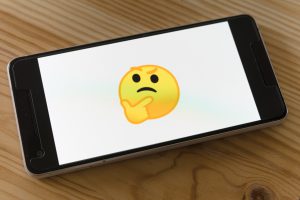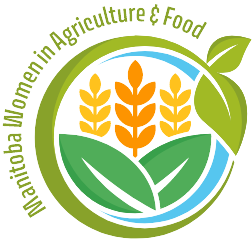
Photo by Markus Winkler on Unsplash
Have you ever been in a meeting where someone says something to you using an acronym or a term and you don’t know what they mean?
We use acronyms and terms, and emojis on a daily basis but we need to know their meaning and use them appropriately in order to understand each other. Lack of clarity can lead to misinterpretations, walking away from a discussion without resolution and even litigation and compensation.
In addition, the language around women’s and gender topics is constantly evolving, which confuses matters even more.
Here, we offer a few terms and definitions that can help communicate more clearly and mitigate confusion. More can be found here.
Acronyms and terms
DEI.
This acronym means Diversity, Equity and Inclusion, but there are other acronyms out there for the same concept such as EDI and IED, and there seems to be no consensus or default about which one to use. However, a catchier and easier acronym that expands on the concept is IDEA, which stands for Inclusion, Diversity, Equity and Accessibility.
2SLGBTQI+
Two-Spirit, Lesbian, Gay, Bisexual, Transgender, Queer/Questioning, and Intersex. A plus sign or asterisk added to any acronym indicates the inclusion of sexual orientations and gender identities not explicitly included in the acronym. There are many variations of this acronym.
Barrier.
Obvious or subtle obstacle that prevents or restricts members of society from accessing, using, or doing something that others can readily access, use or do. Can be physical, economic, financial, informational, and/or organizational policies/practices. Systemic barriers are policies, practices, or behaviours in society that exclude marginalized groups.
Cognitive diversity.
Having a variety of ideas, opinions, and perspectives within a group.
Cultural humility.
Cultural humility is a commitment to self-reflection, lifelong learning, mitigating power and institutional accountability by accepting personal limitations, and increasing self-awareness of biases and misperceptions to build relationships.
Cultural intelligence (CQ).
The extent that an individual can adapt to working with different cultures or bridge cultural understandings with empathy and without bias.
Diversity.
Diversity is about the individual. It is about the variety of unique dimensions, qualities and characteristics we all possess, and the mix that occurs in any group of people. Race, ethnicity, age, gender, sexual orientation, religious beliefs, economic status, physical ability, life experiences and other perspectives can make up individual diversity. Diversity is a fact, and inclusion is a choice.
Environmental justice.
The belief that all individuals deserve equal access to healthy living conditions.
Equality.
Where everyone is treated the same regardless of individual differences and needs.
Equal pay for equal work.
Refers to equal pay provisions in employment standards legislation that addresses situations where men and women are performing the same or comparable jobs. Equal pay for equal work takes skill, effort, responsibilities and working conditions into consideration when determining comparable jobs.
Equity.
Where everyone is treated according to their diverse needs in a way that enables all people to participate, perform and engage to the same extent.
Equity-seeking groups/equity-deserving groups.
Groups of people who have been historically disadvantaged and under-represented. These groups include but are not limited to the four designated groups in Canada – women, visible minorities, Aboriginal Peoples and people with disabilities – and people in the LGTBQ2+ community/people with diverse gender identities and sexual orientations. Equity-seeking groups identify barriers and unequal access, and actively seek social justice and reparation.
Impostor syndrome.
Feelings of inadequacy and self-doubt despite actual achievements and success. Impostor syndrome is common in members of underrepresented groups due to awareness of biases, experiences of microaggressions and a historical lack of representation.
Inclusion.
Inclusion is creating a culture that embraces, respects, accepts and values diversity. It is a mindful and equitable effort to meet individual needs so everyone feels valued, respected, and able to contribute to their fullest potential. Where diversity occurs naturally, creating the mix in the organization, inclusion is the choice that helps the mix work well together.
Intersectionality.
A term coined that describes how social identities may overlap to create compounding barriers for individuals. It is described as a framework for approaching issues from multiple perspectives and understanding how multiple groups, or individuals with multiple identities, may be affected. For example, approaching feminism with an intersectional lens would involve acknowledging and addressing the unique barriers faced by women of colour, women with disabilities or trans women.
Meritocracy.
A workplace that claims career decisions (e.g., pay, promotions, hiring) are based exclusively on merit, and that race, gender, or other differences do not influence decisions.
Microaggression.
Small interactions with people or the environment that expose bias towards marginalized groups. While microaggressions may be unintentional, they can have cumulative negative effects on an individual’s well-being and sense of belonging. Examples include asking a person of colour, “where are you really from?” or a woman in a meeting being repeatedly spoken over or dismissed by her male colleagues.
Pay equity.
Equal pay for work of equal value. The goal of the Pay Equity Act is to ensure and enforce that jobs traditionally performed by women are paid fairly when compared to jobs of equivalent value that are traditionally performed by men. The value of these jobs is determined by skill, effort, responsibilities and working conditions.
Privilege.
Unearned access, benefits and opportunities possessed by members of a social group with a high level of power (e.g., white privilege, socioeconomic privilege, cisgender privilege). Privilege occurs when structures and institutions have been historically designed for the benefit of or to be accessed by a particular group.
Social justice.
The view that all people should have equitable access to resources, opportunities and human rights. Social justice is actions taken towards addressing the root cause of inequities and is rooted in the belief that all people have equal value.
Tokenism.
Focusing on limited representation of under-represented groups for the appearance of being inclusive without any action towards meaningful inclusion.
Generations:
Silent generation.
People born between 1925 to ~1945. People of the silent generation were children during the Great Depression and World War II.
Baby boomers.
People born between ~1946 to 1964 when the birthrate in Canada and other countries grew rapidly after World War II. Baby boomers make up a large portion of the current workforce and are reaching retirement age.
Generation X.
People born between 1965 to 1980, when Canada’s birthrate slowed after the baby boom. The portion of this generation born between 1966 and 1971 are sometimes referred to as “baby busters”.1
Millennials.
People born between ~1981 to ~1996. Millennials are the children of baby boomers and grew up throughout the rise of technology.
Generation Z.
People born between ~1997 to ~2011. This generation is most characterized by the existence of social media throughout their lives.
Generation alpha.
People born between ~2010 to 2025. Generation alpha is the most recent cohort and are the children of millennials.
Emojis
Do you use emojis? Many people do. Beware, it can cost you dearly. The content below is from the Canadian Association of Farm Advisor’s July newsletter. Thanks, CAFA!
Thumbs up emoji cost Sask. farmer $82,000.
A Saskatchewan court has ruled that sending someone a thumbs-up emoji could indicate a contractual agreement. The case in question was between South West Terminal Ltd. (SWT) and Achter Land & Cattle Ltd. over a flax contract. The thumbs-up emoji cost Sask. farmer $82,000
Source: https://saskatoon.ctvnews.ca/thumbs-up-emoji-costs-sask-farmer-82-000-1.6468402
Compiled by MWAF from information from the Canadian Centre for Diversity and Inclusion and Canadian Association of Farm Advisors, with thanks.
Edited by Angela Lovell.




